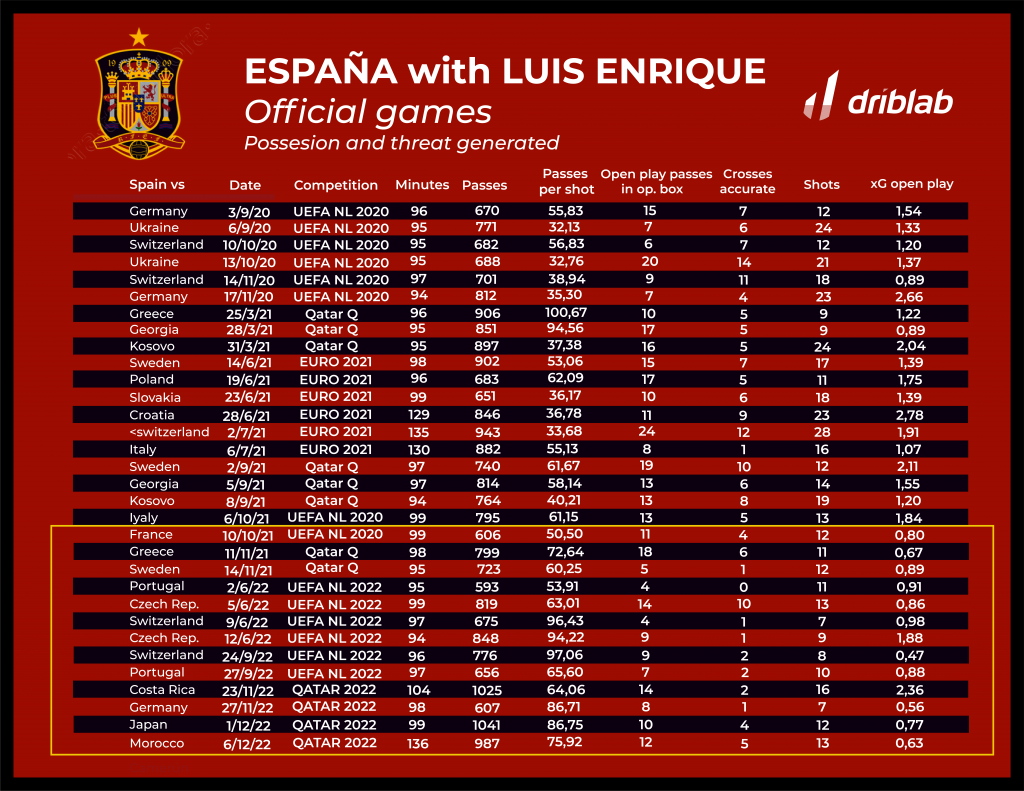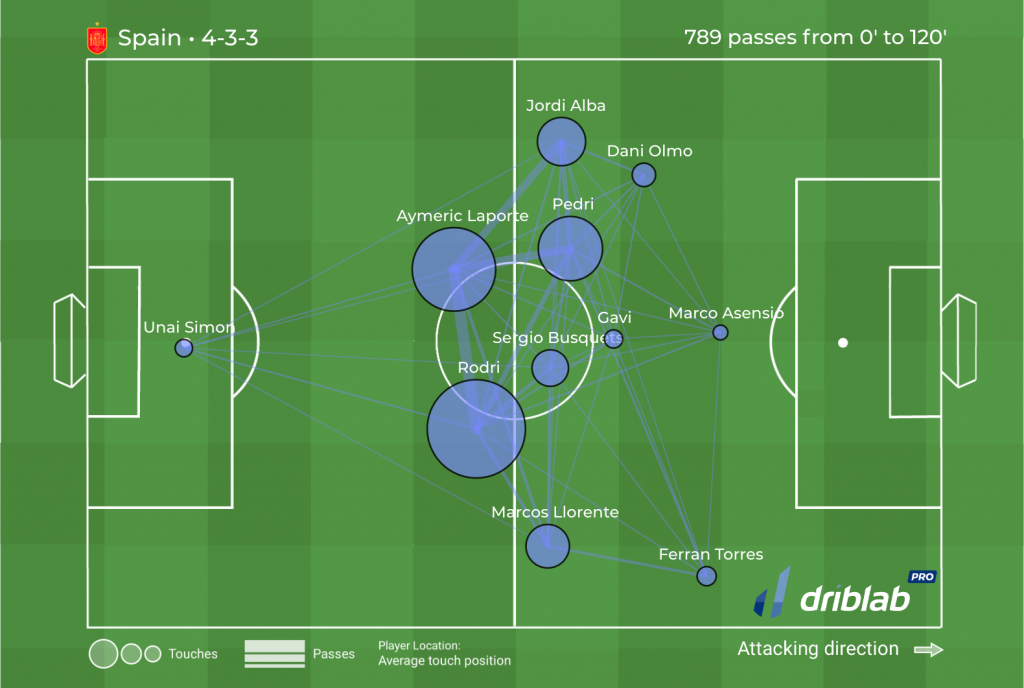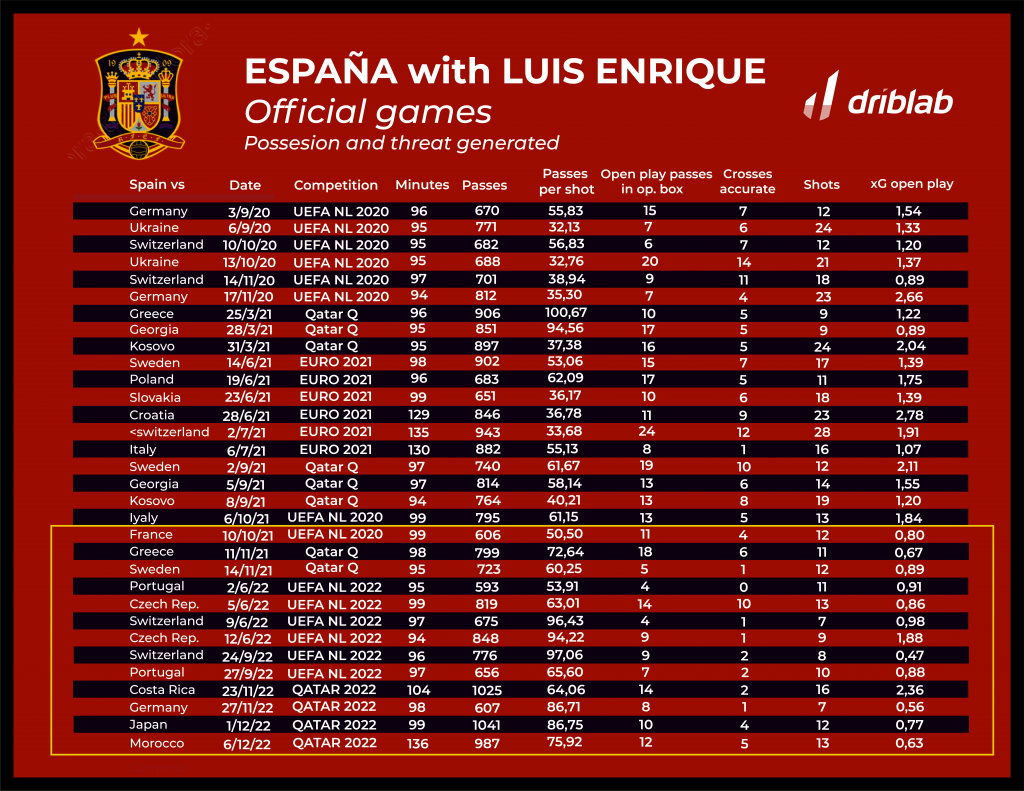Semi-finalists at the last Euro and reaching the Final Four, including a final, of the last two editions of the UEFA Nations League, Spain arrived at the World Cup with a sense of doing all they could as a team to earn chances to compete against teams of far greater individual talent. The opener against Costa Rica promised a rhythm of play and passing high enough to camouflage their dribbling and finishing quality problems, but their subsequent games and the outcome against Morocco extinguished the flame of the opener.
At Driblab we have set out to answer the argument most often used in subsequent analyses, which have led to a debate about the validity of the Spanish national team’s style of play and the type of player that Spain’s academies produce. Beyond that, it is a fact that Spain once again struggled in a specific type of match, where, in the absence of space, they cannot create it from the pass and their plan B either doesn’t appear or doesn’t work.
To explain this, we have compiled Spain’s match record since Luis Enrique‘s era, specifically since the 2020 UEFA Nations League (the last 32 official matches in total), to see how the relationship between the number of passes and the way of translating such continuous possession into real threat (shots, passes into the box, completed crosses, passes per shot or expected goals in open play in each match) has evolved. The result is significant, because of the wear and tear that is evident and because a very specific turning point appears.

Beginning to find readings between the freshness of the beginnings and the deterioration of the last stage, we find, for example, that from September 2020 to July 2021, Spain had eight games out of the first 14 in which they shot on goal, on average, every 32 passes made, a very interesting average with which they managed to combine playmaking with concrete danger. In other words, Spain were vertical with the ball, accelerating the pace of their possession, always looking for the goal, something that translated into expected goals in play (without set pieces), where only in one match did they accumulate less than 1 expected goal in play, really high figures that explained the fluidity, verticality and pace of Spanish possession, also including a tournament of maximum demand, such as Euro 2021 in which they were semi-finalists.
This formula was key for Spain because Luis Enrique had conceived the national team in precisely this way, with the emphasis on the group idea to the detriment of more individual solutions of maximum talent, as available to teams such as France, Brazil and Argentina. His last great game came in the UEFA Nations League semi-finals against Italy on 6 October 2021. His 795 passes translated into 1.84 expected goals per move and one shot for every 61 passes, which is commendable considering the size of the opposition. The loss to France was, in a way, a turning point and the beginning of a decline. Spain’s possession began to get bogged down and only the Costa Rica game stood out as a clear exception.

Rodri and Laporte combined for 366 passes against Morocco. Spain only added 0.63 xG in play.
In the table below, we have highlighted with a yellow box what has happened since 10 October 2021. Spain have continued to make a similar amount of passes, reaching, in Qatar, three games of 987 passes, 1025 passes and 1041 passes, with what happened in the last two being particularly significant. Thus, in the last 13 games, Spain has only scored more than an expected goal from set pieces in two of them, having many problems to generate danger and threat: fewer passes into the box, far fewer expected goals from set pieces, fewer shots and very few crosses completed (in eight of those 13 games, Spain completed 2, 1 or no crosses).
In other words, Spain’s problems, those seen in Qatar, had been going on for some time, specifically a year, after more than four under Luis Enrique. The agility, fluidity and speed of play of the beginnings was being lost and the blockage suffered in Qatar was only its continuation.
We are Driblab, a consultancy specialized in the statistical analysis of players and teams; our work is focused on advising and minimizing risk in professional football decision-making in areas related to talent detection and footballer evaluations. Our database has more than 200,000 players from more than 180 competitions, covering information from all over the world. Here you can learn more about how we work and what we offer.














